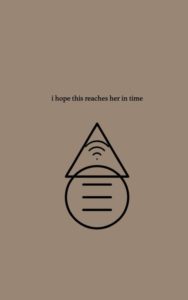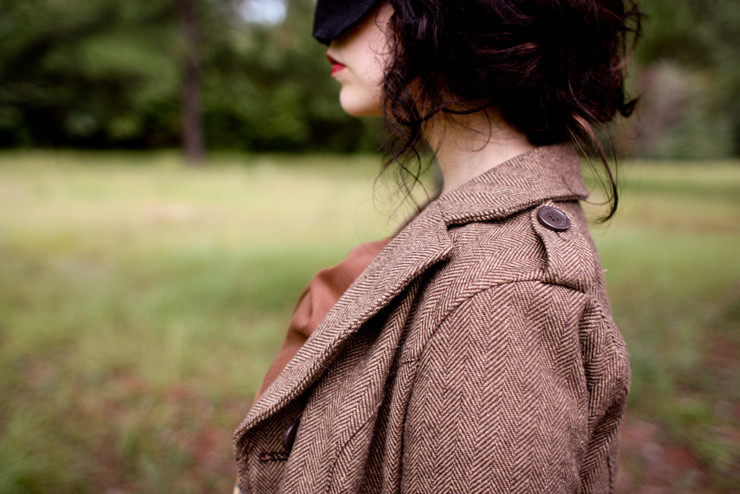I’ve watched a video on Facebook that I almost can’t stop rewatching. It’s produced by Jay Shetty, a British relationship coach, host, former monk, and, as he says, someone who is all about “making wisdom go viral.” Just so you know, Shetty has 14 million followers on Facebook, 1 million followers on Instagram, and 800,000 subscribers on YouTube. His web site has received more than a billion views.
What likely caught my eye about the video is that it’s filmed on a bridge I’ve walked many times—the Millennium Bridge over the Thames in London, which connects the Tate Modern on the South Bank and St. Paul’s Cathedral on the North Bank. The video tells the story of Jack and Louise, and it’s entitled When You Bump into Your Ex. (It’s not yet posted on YouTube; if it were, I’d include that link.) They meet by chance, and it’s clear they’re still in love with each other, but each misunderstands what the other is saying.
I find the video fascinating because it powerfully tells a story, a love story. And it didn’t help that I’d been reading I Hope This Reaches Her in Time, a new poetry collection by Instagram poet r.h. Sin, which could almost serve as the script for the video.
The reading (and purchase) of poetry has been on the upswing since 2012. Most of that upswing, if not all of it, has been happening on the Internet—social media, blogs, and online literary publications (like Tweetspeak Poetry). Poets have been especially active on Instagram, where their words are paired with often striking photography or intimate-feeling images—with names you may not have heard before—Rupi Kaur, Amanda Lovelace, Yrsa Daley-Ward, and r.h. Sin, among others. Their followers number in the millions. They gather their Instagram poems and publish them as collections, creating instant bestsellers. Kaur has published two books of poetry; between them they spent 145 weeks on The New York Times bestseller list.
Sin has published several poetry collections, all of them since 2016. He’s something of a “phenom.”
The poems of I Hope This Reaches Her in Time are untitled, so they become a kind of extended and deeply related narrative. That narrative is a love story, with its love both requited and unrequited. Sin speaks of temporary loves and permanent ones, if there’s such a thing as permanent in this Instagram universe. Perhaps he writes a narrative of many love stories, and the emergence of these poems on the Instagram platform, with its attendant visual backdrop, shapes them that way.

where my eyes cannot close
you survive in shattered dreams
and the bruising of my soul
but just like the night
you fade behind the horizon
and just like the sun
I rise, possibly brighter
and stronger than before
the morning will come
the day will begin
and you will be forgotten
once more
Some of the poems are so short, a line or two, that they appear to be more like aphorisms: “the heartache will teach you / then peace will fill you.”
If it’s not obvious yet, it should be noted that Sin is averse to capitalization and punctuation, which turns out not to be a problem. But if you like short love poems, ones that try to offer a little relationship wisdom, then I Hope This Reaches Her in Time is a good collection of them.
The primary audience for the Instagram poets seems to be younger Millennials and the older members of Generation Z, roughly people between 18 and 24. This dramatic increase in reading poetry doesn’t appear to have spread to established, more traditionally published poets. But it’s nonetheless encouraging to see younger adults engaging with poetry.
I wonder what the poetry of Walt Whitman, T.S. Eliot, and Emily Dickinson might have looked like on Instagram. Or perhaps Jay Shetty filming a video entitled “Crossing Brooklyn Ferry” or one of Elizabeth Barret Browning’s sonnets. It’s a different world, all right.
Photo by Vanessa Porter, Creative Commons, via Flickr. Post by Glynn Young, author of the novels Dancing Priest, A Light Shining, and the newly published Dancing King, and Poetry at Work.
__________________________

“I require all our incoming poetry students—in the MFA I direct—to buy and read this book.”
—Jeanetta Calhoun Mish
- Poets and Poems: Katie Kalisz and “Flu Season” - April 15, 2025
- Poets and Poems: Michelle Ortega and “When You Ask Me, Why Paris?” - April 10, 2025
- Robert Waldron Imagines the Creation of “The Hound of Heaven” - April 8, 2025

L.L. Barkat says
I think a good deal of the success of these poets has been in their ability to create unexpectedly powerful “worlds” that, for some, feels like part home and part journey—the home being in the intimate photos of the poet’s artifacts and physical context and body, with their words designed as scrawls or nostalgic typewritten notes on textures that approximate paper despite their digital form. There is something palpable, grounding, settling that fulfills a longing for belonging, I think, and the words (often simple) feel like conversations with “the friend you need to help you get your life together or just be there to hear and mirror your heart.”
The journeys are provided almost as first-person narratives, snippet documentaries, interspersed with visuals that take you places. (Note the pictures of cars and streets and buildings, very much with a sense of an actual someone who is showing you the world.) The purchasing of the collections, I believe, is less about reading and more about connecting with the world that’s been created. I’m thinking, suddenly, of Marco Polo, though a more personal iteration.
In this sense, these poets are the best book marketers ever, who understand the relationship between reader and author as being one that combines a strange sense of both untouchableness and touchableness. A marvelous incarnation of both the ancient Muse and Exotic Traveler, in digital form that can then land in your hand for the price of a few coffees.
On this count, I think the phenomenon of Instagram poetry has not nearly been yet understood for what it really is, what it offers, how it leads the Imagination forward and becomes a source of vision and hope, despite that the poems themselves do not necessarily do anything consistently unusual on a lexical or image level.
I like to think of Instagram poems as gateways. To home, to journeys, to a kind of wisdom, to one’s own well of possible words.
Megan Willome says
L.L., I like the word “gateways.” I know a Generation Z person who has gotten into poetry through this very gateway.
And Glynn, thank you for making us consider how poets we know (you mentioned Whitman, Eliot, Dickinson) might have been presented to us if they lived now. I think that keeps us from becoming too insular about what is “good.”
L.L. Barkat says
That reminds me, Megan. I meant to show… this is what Dickinson and Eliot would have looked like today, on Instagram! 🙂
https://www.instagram.com/p/BhO4mB7jiB6/?taken-by=tspoetry
https://www.instagram.com/p/BhJgnlIjkrT/?taken-by=tspoetry
https://www.instagram.com/p/BcNdPGbjjBl/?taken-by=tspoetry